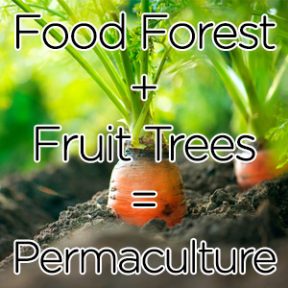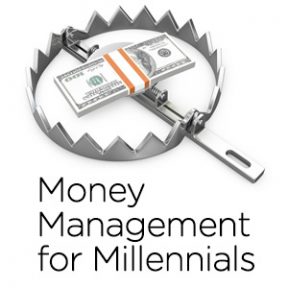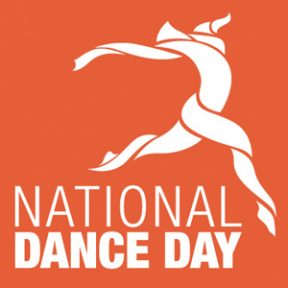 Interesting news!
Interesting news!
For the first time ever, the University of California system will accept letters of recommendation for selected students applying to UC Berkeley, only.
In an effort to better understand specific applicants, UC Berkeley will email prospective applicants a request for up to 2 letters of recommendation if they want more information about the student. Only students who receive this email request will be allowed to submit online letters of recommendation.
Letters should be written by a teacher or instructor, and anyone who knows the student well.
These one-page letters are optional and will be due on January 1, 2016.
 Interesting news!
Interesting news!
For the first time ever, the University of California system will accept letters of recommendation for selected students applying to UC Berkeley, only.
In an effort to better understand specific applicants, UC Berkeley will email prospective applicants a request for up to 2 letters of recommendation if they want more information about the student. Only students who receive this email request will be allowed to submit online letters of recommendation.
Letters should be written by a teacher or instructor, and anyone who knows the student well.
These one-page letters are optional and will be due on January 1, 2016.
 Feeling guilty about watering my veggie gardens and fruit trees during the worst drought of the century, I created a food forest on my property. This is called PERMACULTURE. It’s really a very simple concept – you plant veggies around your fruit trees so when you water the trees, you’re also watering your veggies! So cool!
Feeling guilty about watering my veggie gardens and fruit trees during the worst drought of the century, I created a food forest on my property. This is called PERMACULTURE. It’s really a very simple concept – you plant veggies around your fruit trees so when you water the trees, you’re also watering your veggies! So cool!
This saves about half the amount of water you’d need to grow veggies and fruit trees (separately).
I planted 17 fruit trees about 3 years ago, and created my first food forest with daikon radishes, comfrey and other edibles to boost the nitrogen in the soil and aerate the rock solid terrain. It worked! I didn’t need to add chemical fertilizers and the food forest kept the weeds at bay.
At first, I tried broadcasting (tossing) 10,000 strawberry seeds around the fruit trees hoping I would have a bumper crop of strawberries, but they didn’t take. Didn’t get one strawberry plant. ARGH! Then, I figured out the problem: broadcasting seeds everywhere didn’t work because they needed to be under the drip irrigation water lines. DUH!
So, I just planted carrots, beets, onions, turnips and other root veggies by placing the seeds directly under the drip lines. It’s amazing what happens when seeds are placed under a drip line. I see sprouts popping up around all of the trees after only a week!
My next project is going to involve multi-level plantings. I’ll have root veggies and leafy veggies around the fruit trees, and then climbers (string beans and cucumbers) that will climb up the fruit trees — they won’t need fancy or expensive cages!
Using the permaculture technique to grow food forests gives you a harvest of all kinds of veggies without using additional water. And best of all, the edibles grow together so you don’t have to worry about creating neat little rows and weeding every day.
Check out this article to learn more about permaculture!
[Source]
 Hey 20-Somethings!
Hey 20-Somethings!
You might want to read this article in the Business Insider.
It’s not too late for you to rethink how you spend and save money.
Think: budget, credit score, investments, insurance, and yes, retirement!
[Source]
 With just a few weeks of summer left, college-bound high school seniors should use this time to start writing personal statements and essays for college applications. Yes indeed, it’s that time of year!
With just a few weeks of summer left, college-bound high school seniors should use this time to start writing personal statements and essays for college applications. Yes indeed, it’s that time of year!
Many colleges have just posted their new prompts for essays, and all colleges should have essay prompts available by Labor Day weekend (another good time to get a head start on essays).
Here are a few essay prompts that are up right now:
Common Application (519 colleges accept this application):
1. Some students have a background, identity, interest, or talent that is so meaningful they believe their application would be incomplete without it. If this sounds like you, then please share your story.
2. The lessons we take from failure can be fundamental to later success. Recount an incident or time when you experienced failure. How did it affect you, and what did you learn from the experience?
3. Reflect on a time when you challenged a belief or idea. What prompted you to act? Would you make the same decision again?
4. Describe a problem you’ve solved or a problem you’d like to solve. It can be an intellectual challenge, a research query, an ethical dilemma-anything that is of personal importance, no matter the scale. Explain its significance to you and what steps you took or could be taken to identify a solution.
5. Discuss an accomplishment or event, formal or informal, that marked your transition from childhood to adulthood within your culture, community, or family.
University of California (10 colleges accept this application):
1. Describe the world you come from — for example, your family, community or school — and tell us how your world has shaped your dreams and aspirations.
2. Tell us about a personal quality, talent, accomplishment, contribution or experience that is important to you. What about this quality or accomplishment makes you proud and how does it relate to the person you are?
Pro Tip: Make sure you have the current essay topics, and not last year’s!
 Don’t have time to be your kids’ taxi service? Set up a carpool for this upcoming school year NOW. I did this for both of my girls. By using my Carpool Schedule form, you can organize who will be picking up or dropping off the kids each week.
Don’t have time to be your kids’ taxi service? Set up a carpool for this upcoming school year NOW. I did this for both of my girls. By using my Carpool Schedule form, you can organize who will be picking up or dropping off the kids each week.
This gives you complete control over every aspect of your kids’ transportation schedules. You’ll know when you and other parents will be driving the kids, and you can have as many participants in your carpool as you like.
Have all parents complete an Emergency Form [page 1] [page 2] so every driver will have important information in the case of an emergency. Have the drivers also fill out the Carpool-Driver Information Form to ensure that the driver doesn’t have a long list of moving violations and has auto insurance. This will give you some peace of mind.
It only takes a few hours to organize a good carpool using my forms. Do it now! Be flexible with schedule changes and vacations — they’re inevitable but manageable.
By sharing the driving with other parents, you’ll save money on gas and more importantly, you’ll save precious time!
 Being a product of the 60’s and 70’s, I’ve always considered smoking pot to be a lesser evil than booze, uppers, downers, and heroin. Just my vocabulary will show you how out of date I am on the drug scene.
Being a product of the 60’s and 70’s, I’ve always considered smoking pot to be a lesser evil than booze, uppers, downers, and heroin. Just my vocabulary will show you how out of date I am on the drug scene.
Last week, a client asked me if I could blog about teens smoking weed, so I interviewed Dr. Sarah Villarreal, a psychologist who specializes in teen disorders in Palo Alto, and my cousin, Dr. Alex Kawana, a physician, to get the latest update on the affects of marijuana on teens.
Quite frankly, I was surprised by what they told me. Dr. Villarreal confirmed that despite conflicting evidence of marijuana being a “gateway drug” (one that leads to harder drugs), it negatively affects motivation, sleeping, mood and healthy eating. Dr. Villarreal stated it is a depressant and can at the very least amplify existing depression and/or create depressive symptoms.
Dr. Alex Kawana says that the California Society of Addiction Medicine (CSAM) believes that marijuana should be legalized, whereas the American Society of Addiction Medicine (ASAM) believes that it should continue to be illegal.
CSAM believes that marijuana should be legalized and the revenues generated should go towards the prevention of adolescent marijuana use. Kawana agrees. Adolescents should to be told to wait until age 18 to start smoking marijuana. Data shows that adolescents who are chronic users of marijuana will be chronic users as adults. However, adults who start smoking marijuana rarely become chronic users. According to Health Canada, the marijuana that the flower children smoked at Woodstock in 1969 had 1% tetrahydrocannabinol (THC), but today, street-grade marijuana has at least 10% and up to 30% THC. Wow! I had no idea.
Here are 4 reasons why teens shouldn’t smoke marijuana.
#1: Physical Health
While marijuana may seem to have a relaxing affect, it actually increases your heart rate by 20 to 50 beats per minute. This causes strain on your organs and forces your heart to work extra hard to keep up. The smoke from marijuana irritates the lungs causing breathing and lung problems. Regular users can experience daily coughs and a higher risk of lung infections that can result in pneumonia.
#2: Mental Health
According to a Rhode Island state government report, teens who smoke marijuana double their chances of developing depression and anxiety, and triple the odds of having suicidal thoughts. A Swedish study found that teens who were heavy weed smokers were six times more likely to develop schizophrenia, especially if they have family history of the disorder.
#3: Academic Success
The National Institute of Drug Abuse (NIDA) found teens who smoked marijuana had an 8-point drop in their IQ, even if they quit smoking in adulthood. Long-term users had lower academic grades and were 60% more likely to drop out of school, have attention and memory problems, suffer from learning difficulties, and be less satisfied with their lives than their non-weed-smoking peers. Duke University found that the earlier and more frequently a teen smoked pot, the greater the loss of intelligence by age 38. Dr. Andra Smith, an associate professor at the University of Ottawa, says,”I don’t really care if you smoke at 35, but don’t do it when you’re 13 because you’re just setting yourself up for failure.” Good advice!
#4: Impaired Driving
According to the NIDA, marijuana is the most common illegal drug involved in auto fatalities, and high school seniors are twice as likely to receive a traffic ticket and 65% more likely to get in an accident than their non-pot-smoking counterparts. Because TLC affects areas of the frontal cortex — the part of your brain that involves decision making, smoking weed can cause you to do things you might not do when you are straight. Marijuana negatively affects your concentration, coordination, and reaction time — making you unsafe behind the wheel!
Teens cope with so many pressures: school, relationships, college and career, and drugs/alcohol. If you’re worried about your teen, get help fast! Once they start smoking pot regularly, it’s difficult to get them to stop.
I refer teens to Dr. Sarah Villarreal of Entelechy Wellness Center in Palo Alto and San Francisco, and to Dr. Richard Gilbert (psychiatrist) in Aptos.
 I don’t know why so many people suffer from depression today, but you probably know someone who does. Unless you’ve experienced depression yourself, it’s difficult to understand how they feel and why they act the way they do.
I don’t know why so many people suffer from depression today, but you probably know someone who does. Unless you’ve experienced depression yourself, it’s difficult to understand how they feel and why they act the way they do.
From the outside looking in, you want to give them a quick fix or shake it out of them, but until you know what they’re going through and how they feel, you really can’t support them. And worse, you may be put off by what may seem like selfish or self-absorbed behavior, and not be there for them when they really need you.
I found comfort in reading an article by Shireen Dadkhah, “10 Agonizing Truths Depressed People Never Talk About.” She discusses how depressed people feel to help their families and friends better understand what they are going through. Depressed people feel helpless and they don’t like relying on drugs.
Depression zaps away all of the wonderful things that your loved one used to enjoy. Their passion for sports, music, or hanging out with you — GONE. Because they are dealing with their anxiety and coping with life from moment to moment, they don’t see what is going on in your life. And that may feel like rejection — to you.
The important thing to remember is that they hate that they are depressed and that they can’t be a friend back for you. You need to know this. Be their friend and be there for them; it’s a selfless act because you are their friend. And, thank goodness for that!
[Source]
 Dance was my girls’ sport.
Dance was my girls’ sport.
They couldn’t catch a baseball if someone dropped it in their hands (oops!, mitt). But dance was their world from about age six to adulthood.
It taught them how to move with grace (except during those awkward tween years when they would break toes walking through doorways!), understand music composition, and put it all together through choreography.
Dance was instrumental in building their confidence and appreciation for the arts.
Benjamin Holck (aka Ben Jammin) introduced musical theater to my daughters and all of the students at Merit Academy. They sang and danced to CATS and Magic of Broadway:

Ruth Fisher (Dancenter) provided my girls their first formal dance instruction where they explored jazz, tap, and hip hop, and made great friends:

Jeni Sudbrink Evers (Musical Theater Choreographer) and Suzanne Hobbs (Musical Theater Voice Instructor) brought out their excitement for performance in Magic of Broadway II, It’s Gotta Be Rock ‘n Roll Music, and Best of Rock ‘n Roll Music: 1955-1975:

Athena Harrah Knight (No Limits) launched Nicole’s and Jaclyn’s passion for dance when they joined No Limits’ competition dance teams. They danced with incredible dancers under the direction of amazing choreographers: Athena Harrah Knight (now Aptos Academy of Performing Arts), Tisha Nusbaum (now Pacific Arts Complex), Ali Stapleton Lambrecht (now Coastal Vibe), and the late Carrie McCoid:



Nicole went on to dance with the Stanford Dollies (2004-2005), where she had her best dance experiences to date and made best friends:

And dance training wouldn’t be complete without ballet, and Nicole and Jaclyn received excellent training with Robert Kelley and Diane Cypher at The Studio, School of Classical Ballet.

Jaclyn founded the 5 C Dance Company at Claremont McKenna College where she was the Artistic Director and Choreographer for 4 years. She continues to be best friends with Kelsey Schmidt (Assistant Director) and Lauren James (Sound and Music Director):

Jaclyn taught dance and choreographed numbers for Dance Design‘s competition dancers in Pennsylvania. She also performed solos at the recitals at the end of the year:

Jaclyn danced with Tabitha Robinson-Scott’s Monarch Dance Company in Pennsylvania for 2 years:

Thank you to all of the amazing people who brought dance to my girls’ lives!
 Forbes recently published an article “5 Money Moves that Build a Retirement” that lays out easy — and painless — ways to start saving for your retirement.
Forbes recently published an article “5 Money Moves that Build a Retirement” that lays out easy — and painless — ways to start saving for your retirement.
Now that we’re all planning on living productive lives FOREVER… we need to find ways to finance it!
[Source]
 I’m always surprised that the beauty of a college is often the number one factor that dazzles my high school students (and their parents) in the search for colleges. I’m dumbfounded every year.
I’m always surprised that the beauty of a college is often the number one factor that dazzles my high school students (and their parents) in the search for colleges. I’m dumbfounded every year.
Even with a tight economy and parents sweating bullets over how they’re going to pay for their children’s college educations, they still get wow’d by college architecture, landscaping, and location. Even when I send them off with a list of things to do, questions to ask, and classes to observe, they still choose their favorite colleges based on superficial aspects.
I’ve noticed oodles of articles about beautiful colleges, and Best Value Schools even has one that boasts “30 Most Beautiful Coastal College Campuses.” While I wouldn’t want my kids going to an ugly college in a dangerous neighborhood, I would still be more interested in the quality of the specific academic departments that my child was interested in and the opportunities offered to them in those programs. Here are some handy tips on how to pick a good college.
When parents spend between $80,000-$225,000 for a bachelor’s degree, I would think they would be checking out their ROI (return on investment). A beautiful campus is really just a sales pitch to lure students (and their parents), to believe that writing those hefty tuition checks is worth it. After all, ya gotta make sure that young Jason has an ocean view room (UC Santa Barbara and Pepperdine University). And we wouldn’t want Jessica to be running laps without a cool ocean breeze, would we? Too much heat is dangerous for snowflakes!
So yeah, I’m CONTINUALLY baffled by parents who judge colleges based more on their physical beauty and less on the professors, departments, and opportunities offered. To continue the book analogy, they’re judging the cover, not the content. To use another analogy, would you buy a car that looked great on the outside, but didn’t have an engine? If your college can’t get you where you want to be, that’s exactly what you’re doing. A lime green Ford Pinto with one orange door won’t look great, but it’ll probably get you where you want to go.
Instead of focusing on the surface layer, I’d dig deep and look at the school’s stats: how many students get jobs in their fields immediately after graduation? Do recruiters (in their chosen majors) actively hire students from this college? What courses can students take in order to obtain a degree and to satisfy graduation requirements?. You might be surprised by the difference between what students actually learn and experience for the same major/degree at different colleges. That’s why many college grads don’t feel equipped to start working in their fields after graduation, and employers prefer applicants with a few years experience under their belts.
So when looking at colleges with your kids this summer, don’t become enamored by million dollar landscape facelifts (Johns Hopkins did a one-million dollar makeover thanks to a generous alum) and delicious food (Washington University serves steak and lobster), but instead check out their academic departments and make decisions based on the opportunities your child will graduate with.
[Source]









